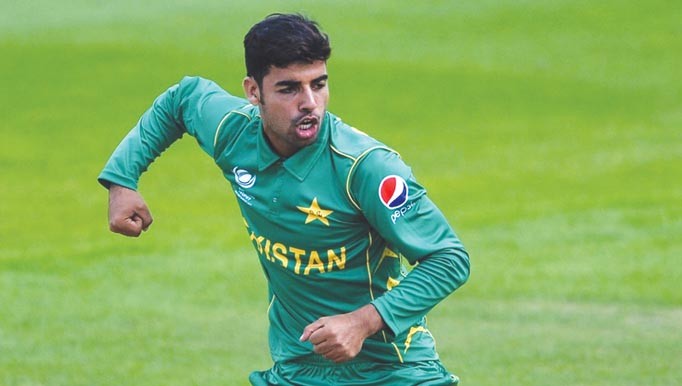
Pakistan has already experienced a stunning decline in sports like squash and hockey and will continue suffering similar setbacks unless it starts producing fitter and faster athletes

There are very few sights in sport that are more memorable than seeing a young athlete blossoming soon after arriving at the international stage. Talented greenhorns like Shadab Khan, who won the second Twenty20 International for Pakistan against Sri Lanka in Abu Dhabi on Friday night, are one of the chief reasons why fans keep on falling in love with whichever sport that they follow. It’s true that the mega stars provide fans with the main attraction but sometimes newer, less experienced players like Shadab steal the limelight and make those games unforgettable.
Players like Shadab, Hasan Ali, Babar Azam and Fakhar Zaman have rejuvenated this Pakistan team because of their sheer talent and hunger for success. Before them Pakistan were almost always going through the motions in coloured clothing as they failed in one limited-overs match after another in recent years. Their stocks in Tests were in better shape but primarily because of the seasoned duo of Misbah-ul-Haq and Younis Khan and the guile of Yasir Shah.
There is no doubt that Younis and Misbah excelled in the longer format of the game because of their vast experience. But the other important element behind that success was fitness. Misbah was over 40 and Younis was getting there but even at the time of their retirement both of them were way fitter than most of their team-mates, some of them who were half their age.
Even if you take a fitness test now, there are good chances that 39-year-old Younis will fare better than Shadab, who is 20 years his junior.
The point here is that players like Shadab, if they want to graduate from being young starlets to legends of the future, will have to take their fitness very, very seriously. In recent times we have seen our young players breaking down due to one injury or another. More often than not the root cause behind injuries is a lack of proper fitness. There is this simple equation in sport: fitter athletes suffer lesser injuries. And a super fit athlete generally recovers faster.
Don’t get me wrong. Players like Hasan and Shadab look pretty fit. They are lean and mean and have not an ounce of extra fat. They are energetic. They are sharp on the field. But the question is: for how long? You cannot join the Hall of Fame for your performances in a few matches. To join the greats you have to have one key element: longevity.
Sachin Tendulkar might not have become Sachin Tendulkar if he had a career spanning an average period of, say eight to ten years. He played international cricket for over two decades and broke all sorts of batting records.
The problem with Pakistani sportsmen and that include the cricketers is that in our country there is no proper culture that promotes fitness. Our eating habits aren’t great. Our environment, apart from some part of our countryside, is fighting a seemingly losing battle against pollution. We don’t even have the basic infra-structure that can help our young athletes to attain proper fitness before they start knocking at the doors of international sport. Most of our cricketers, hockey players, footballers start focusing on their fitness after making it to the respective national team. For some of them it is already too late. For others, it’s a case of catching up.
Our biggest blunder over the years is that we have not paid attention to the one sport that can promote fitness among young athletes. Though Pakistan prides itself as a sporting nation, the country has no worthwhile achievement in the field of athletics in the last six decades. Back in fifties we had Abdul Khaliq, who was dubbed as Asia’s fastest man, but apart from that our achievements in track and field have been few and far between. I don’t think that Pakistanis are physically or mentally incapable of winning laurels in athletics. It’s true that that expecting them to win at the Olympic or world level will be expecting too much but with proper measures Pakistan can excel at South Asian and Asian levels.
The problem is that athletics - the mother of all sports - has been treated in a step-motherly manner in Pakistan. The rot begins from the grassroots. There are a handful of schools in Pakistan that make it mandatory for their students to take up track and field. Most of the schools, if they want their students to take up the sport, have no facilities of their own or even an access to them.
It is an alarming situation because in today’s sport you cannot excel at the international level if you lack world class fitness.
But the country’s sports authorities have always looked the other way. Take for example the case of Karachi. Pakistan’s biggest city with a population of around 20 million doesn’t even have one single tartan track that functions. A tartan track is necessary for elite athletes and a city as big as Karachi should have had plenty of them a long time ago. But there is little hope that it will even have one because nobody is even thinking about it.
Pakistan will have to soon realize that it is ignoring athletics at its own peril. It has already experienced a stunning decline in sports like squash and hockey and will continue suffering similar setbacks unless it starts producing fitter and faster athletes.